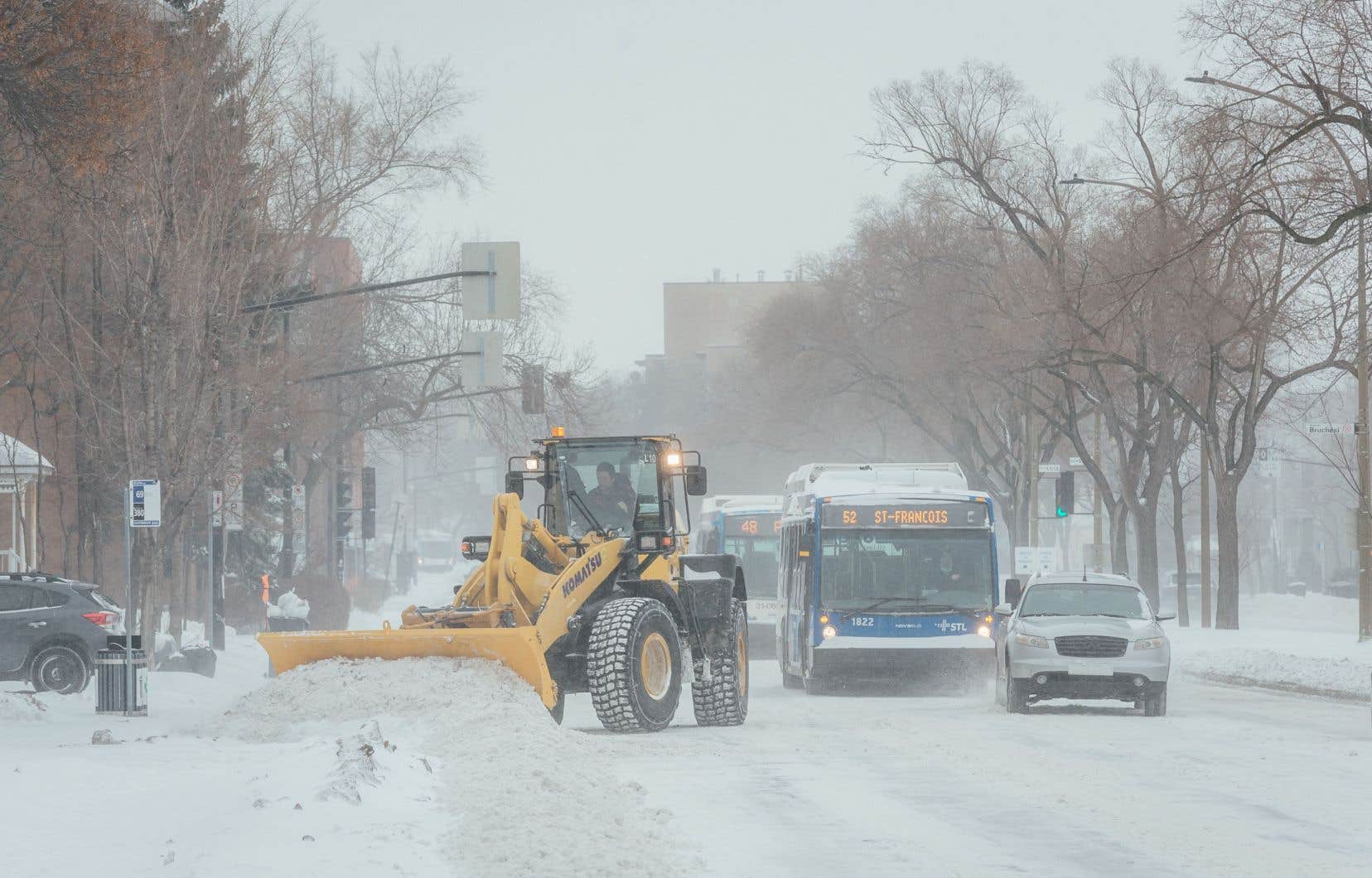Marie Turcotte’s apartment in Montreal is adapted to her reduced mobility, with an access ramp allowing her to enter and leave her home in a wheelchair. A landing stage well marked by two posts in front of its end of the sidewalk prohibits parking a car there and facilitates transport by the adapted service of the Société de transport de Montréal (STM). It flows and it rolls.
The situation gets worse after a big snowfall. Snow removal snowcats inevitably leave a buildup on the landing stage. Mme Turcotte must then call the City to have it removed, which can take several days. And then goodbye mobility, nothing works anymore.
“We are told to call 311 to report the fact and that someone will come by with a shovel,” explains the general director of Ex aequo, responsible for the transport file within this organization founded in 1980 to defend the rights of people with motor disabilities.
“Snow removal is done two or three days later. We ask that the landing areas be cleared of snow at the same time as the sidewalks. The landing stages are on public property, and public services had to manage their maintenance. »
Tired of complaining without effect, Ex aequo filed a complaint with the ombudsman, the last resort. His report is still being processed and awaiting a response from Montreal.
“Clearing drop-off areas for people with reduced mobility is a priority for the City and its boroughs,” responds Hugo Bourgoin, media relations officer for the City of Montreal, in writing. He adds: “There is still a way to go to ensure universal accessibility across the entire city, but the City is nevertheless firmly committed to it. »
Cycle paths and pedestrian streets
Pedestrian zones and cycle paths also pose their share of problems.
Car-free zones force an end to door-to-door transportation service. Cycle paths built between the sidewalk and the roadway, often with a concrete border, prevent specialized vehicles from deploying the ramp or tailgate on the drop-off points reserved for paratransit.
“However, there are two obligations for the driver,” recalls M.me Turcotte: he must offer door-to-door service and he must always keep an eye on his vehicle, certain users with intellectual disabilities must not be left unsupervised. »
Tracks built in parallel with a bus line also pose safety challenges. Marie Turcotte cites the concrete example of the REV rue Saint-Denis, where passengers must cross the track to get on or off the bus. “Even though the City has raised the table and installed yellow tape to create a warning zone, it remains dangerous. Additionally, people with visual impairments cannot see the threat from cyclists. »
The City does not offer the level of security that we should have
The Montreal public relations officer replies that “the City has always worked closely with the STM to design bus stops along a cycle lane in the best possible way in order to manage interactions between users”. He explains that a sheet defining criteria for the development of bus stops along the slopes was designed in collaboration with the Universal Accessibility Advisory Committee and the STM. “These criteria were used in all cycling projects designed after September 2022 and remain the reference to this day,” he writes.
Ex aequo says on the contrary that the Committee did not follow all the recommendations of its experts. “The City does not offer the level of security that we should have,” says Marie Turcotte. We want the development of the slopes to continue. But we want paratransit vehicles to be able to stop along the sidewalk at the destination address at all times. We want safe boarding and disembarking areas, and we want greater measures at bus stops to ensure that cyclists slow down. »
Small businesses
Ex aequo also wants much more effort for accessibility to small businesses. The Quebec Construction Code does not require any special arrangements for commercial areas of 300 square meters and less.
It is therefore up to municipalities to legislate. Result, basically, the vast majority of spaces on the ground floor of commercial streets do not have to adapt by building an access ramp for example.
For less than a decade, there has been a City of Montreal program to financially support redevelopments to improve the accessibility of businesses. Since then, less than ten small businesses have taken advantage of it, according to Mme Turcotte. “Work is also underway in terms of regulatory review, aimed at making as many small buildings as possible accessible, including local shops and small businesses,” indicates Hugo Bourgoin.
Ex aequo demands that the new spaces be universally accessible. She also wants old businesses to at least submit to regulations “aimed at optimal, but not necessarily maximum, accessibility”.
Universal accessibility
Montreal adopted a Municipal Universal Accessibility Policy in 2011. It is committed to integrating this principle into all decision-making stages. Those primarily concerned have been decrying for a good decade the lack of concrete effects of this beacon.
An organizational diagnosis commissioned from the firm Raymond Chabot Grant Thornton, submitted in 2022, concluded that the metropolis was only at a level of “awareness” of the problems linked to accessibility, without further efforts or strategy. The report proposed ways to accelerate change.
“Since then, nothing has been done, once again,” summarizes M.me Turcotte. Ex aequo is campaigning in particular for the creation of a universal accessibility office, which would be headed by the general director of the City.
“We need a solid, decision-making and concerted governance structure with real power,” says M.me Turcotte. We need consistency in the City’s actions. Currently, management is done by district, on a piecemeal basis. In one neighborhood the library is easily accessible, in the other neighbor it is not. »
